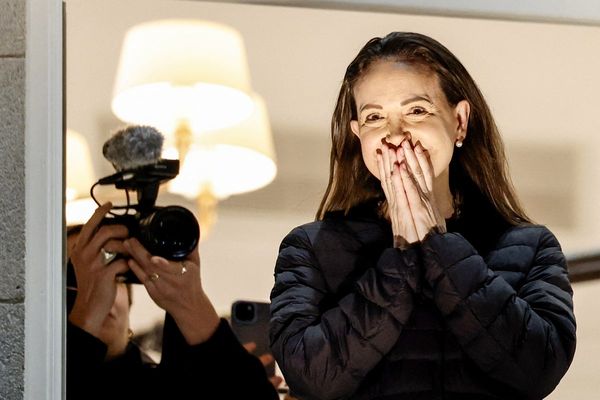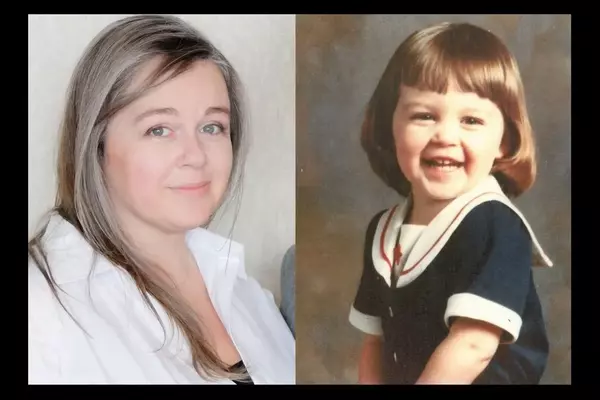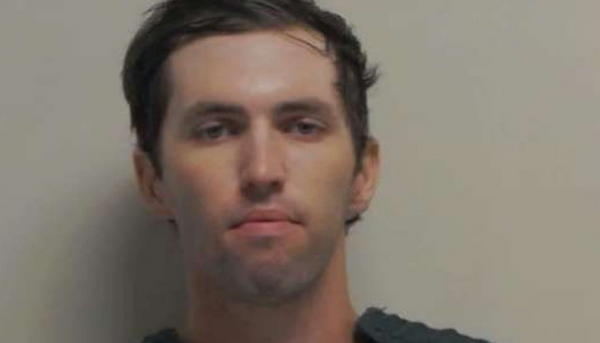
‘Too tall and too ‘kooky’” – that was a casting director’s verdict on Diane Keaton in the late 1960s. Either she was ahead of the curve or she bent the world gently to her will, but within a few years she was a star.
Keaton, who has died aged 79, appeared in both the year-long stage run and the film adaptation of the comedy Play It Again, Sam (1972). This began her long association – spanning one play, eight movies, a romance and more than half a century of friendship – with its author, Woody Allen. He later gave her what became her signature role in Annie Hall (1977), for which she won the best actress Oscar.
Recalling her audition for Play It Again, Sam, Allen described her as “adorable, funny, totally original in style, real, fresh … One talks about a personality that lights up a room, she lit up a boulevard.”
In the same year as the film of Play It Again, Sam, she was also heartbreaking as Kay, the ingenuous but ultimately crushed and neglected wife of Michael Corleone (Al Pacino), son of a Mafia don, in The Godfather.
Across the entire Godfather trilogy (there were sequels in 1974 and 1990), she provided a minor but effective counterpoint to the brooding, fatalistic masculinity. “Her presence is alive with uncompromising kindness,” wrote the critic David Thomson, who compared her to Ingrid Bergman in the films of Roberto Rossellini.
In acting terms, Keaton proved that a woman could have it all. From the start, she balanced comedy and drama without one discipline undermining the other. Her intelligence was always palpable, along with a restless energy.
Another one-time partner, Warren Beatty, marvelled at what he called her “unfair allotment of gifts” and said: “She’s constantly in search of something that’s true.”
For further proof of Keaton’s dexterous ability to toggle between the grave and the goofy, one need only compare two films of hers from 1977. In Annie Hall, she was the title character, a neurotic and idiosyncratic singer who embarks on a faltering romance with a comedy writer, played by Allen. He also co-wrote and directed the film, and based it on their relationship.
Annie Hall is unavoidably bittersweet, but Keaton’s loosey-goosey charm brings buoyancy to the film, her giddiness a rebuke to Allen’s comic pessimism. With her awkward habit of filling conversational silences with “la-di-da”, her blithe way with a faux pas and her mix-and-match wardrobe, which sparked a trend for women to wear traditionally male clothes, Keaton embodied a dynamic vision of femininity liberated from gender norms.
The character was modelled on the actor herself, from Annie’s name (Keaton was born Diane Hall, and adopted her mother’s maiden name to distinguish herself from another Equity member) to her family (“It turns out they are wonderful material for a film,” Allen told her) and her Ralph Lauren-accented ensemble. “Let’s just say Keaton always suited up with a certain eccentric imagination,” Allen observed, “as if her personal shopper was Buñuel.”
The performance won her an Oscar – the first of four nominations, and the only one converted into a prize – and might have led a lesser actor to be pigeonholed.
However, Keaton had already established her versatility in the early years of her screen career, when she juggled the first two Godfather films with hilarious turns in Allen’s screwball comedy Sleeper (1973) and Love and Death (1975), his breakneck pastiche of Russian literature.
Her range was proved beyond doubt, though, with the release six months after Annie Hall of Looking for Mr Goodbar, a gruelling drama in which she played a teacher of deaf children who spends her evenings cruising singles bars for sex and is finally murdered.
The director Bruce LaBruce called her work in the movie “fearless”. Combined with Annie Hall, he said, it “signified a new kind of female star, independent, liberated, and sexually assertive”.
Born in Los Angeles, she was the eldest of four children, and raised in Santa Ana. Her mother, Dorothy (nee Keaton), was a photographer and the regional winner of the Mrs America housewives’ competition, one of many talent contests she threw herself into trying to win, while her father John, known as Jack, was a real estate agent. Diane’s lucrative sideline in flipping properties – that is, buying a dilapidated home, renovating and then reselling it – could be traced back to her childhood experience of accompanying him to view houses.
Keaton was educated at Santa Ana high school, where she developed a taste for acting and singing, and Santa Ana college. She moved to New York – “I was looking for an audience, any audience,” she later said – and studied dance with Martha Graham and acting under Stanford Meisner, who told her: “Some day you’re going to be a good actress.”
One of her first parts came in the hippy stage sensation Hair (1968), though in refusing to appear naked at the climax she forfeited the $50 nudity bonus. She also bristled at the ungainly speed with which her co-stars became career-minded: “All that peace and love – they were competitive as hell.” During the run, she was promoted from understudy to main cast member on the condition that she lose weight. This became the catalyst for her struggle with disordered eating and eventually full-blown bulimia. She left theatre behind after Play It Again, Sam, and, after a barren spell in which she scratched out a living in commercials, she established herself as a TV and film actor.
In The Godfather Part II, she handled her heaviest material to date, including a scene in which she tells Michael why she has aborted their baby: “I wouldn’t bring another of your sons into this world … I had it killed because this must all end.”
Keaton and Pacino would later have an on-off relationship, which did not end definitively until they were filming The Godfather Part III.
By the time Annie Hall opened in 1977, she was in a relationship with Beatty, who told her: “You’re a movie star. That’s what you wanted. You got it. Now deal with it.” She later admitted she “wanted to be Warren Beatty, not love him”.
He cast her as the journalist Louise Bryant in Reds (1981), his epic drama about Communism, though she admitted it took her “something like 65 excruciating close-ups” before she could begin to like her character.
That film, for which she received her second Oscar nomination, coincided with her commitment during the first half of the 1980s to dramatic roles. Her fiercest performance was opposite Albert Finney in Alan Parker’s stinging divorce drama Shoot the Moon (1982). She then played an actor-turned-spy in the John Le Carré thriller The Little Drummer Girl and a warden’s wife springing two prisoners (Mel Gibson and Matthew Modine) from jail in Mrs Soffel (both 1984). She starred with Sissy Spacek and Jessica Lange as sisters raking over their lives and mistakes in Crimes of the Heart (1986).
It was not until Baby Boom (1987), in which she played a management consultant saddled unexpectedly with a child, that Keaton enjoyed her first commercial hit since Annie Hall and returned wholeheartedly to comedy. Under that film’s director, Charles Shyer, she brought some unearned sparkle to the perfunctory Father of the Bride (1991) and its 1995 sequel. She enjoyed another hit with The First Wives Club (1996), teaming up with Goldie Hawn and Bette Midler for sharp-clawed comic revenge.
During the 80s, her collaborations with Allen – who had followed Annie Hall by directing her in the Bergmanesque chamber-piece Interiors (1978) and Manhattan (1979) – had fallen away as she concentrated on drama. Meanwhile, Allen’s new partner, Mia Farrow, became his go-to female lead.
But after a cameo singing You’d Be So Nice to Come Home To in Allen’s Radio Days (1987), Keaton was reunited with him for the jubilant Manhattan Murder Mystery (1993). They played a couple whose marriage is rejuvenated when they become amateur sleuths following the death of a neighbour. Keaton’s role was intended for Farrow, who had still hoped, somewhat unrealistically, to play it even after her break-up with Allen.
Keaton continued to defend Allen against accusations from Farrow and her daughter Dylan of child molestation (“I believe my friend”), and refused to join the chorus of celebrity denunciations. “He would cringe if he knew how much I care about him,” she wrote.
Though there was a blandness to her recent films, Keaton herself was never less than watchable. In the tear-jerker Marvin’s Room (1996), for which she was Oscar-nominated, she was a woman calling on her estranged sister (Meryl Streep) for a bone marrow transplant. There was a fourth Oscar nod for Something’s Gotta Give (2003), in which she was a playwright who develops feelings for her daughter’s ex, played by Jack Nicholson. Keaton described the film, which also shows her fielding romantic interest from a doctor played by Keanu Reeves, as a favourite among her own work.
She was part of an ensemble cast, also featuring Sarah Jessica Parker, in the Christmas-themed comedy-drama The Family Stone (2005), and played a daytime TV presenter in Morning Glory (2010). Her most complex recent work was on TV in The Young Pope (2016), where she was the confidante to Pope Pius XIII (Jude Law).
Among the films Keaton directed were the documentary Heaven (1987), the drama Unstrung Heroes (1995) and the comedy Hanging Up (2000), in which she co-starred with Meg Ryan and Lisa Kudrow. As executive producer of Elephant (2003), the Palme d’Or-winning elliptical drama inspired by the Columbine high-school shootings, she was responsible for bringing together the director Gus Van Sant and the film’s production company, HBO.
Her books include Then Again (2011), a fragmentary memoir which mixes her own recollections with accounts of caring for her late mother, who suffered from dementia, as well as extracts from her mother’s extensive diaries.
“I never found a home in the arms of a man,” said Keaton, reflecting on her relationships. But at the age of 50, she began a new life as an adoptive mother.
She is survived by her daughter, Dexter, and her son, Duke.
• Diane Keaton (Diane Hall), actor, born 5 January 1946; died 11 October 2025







